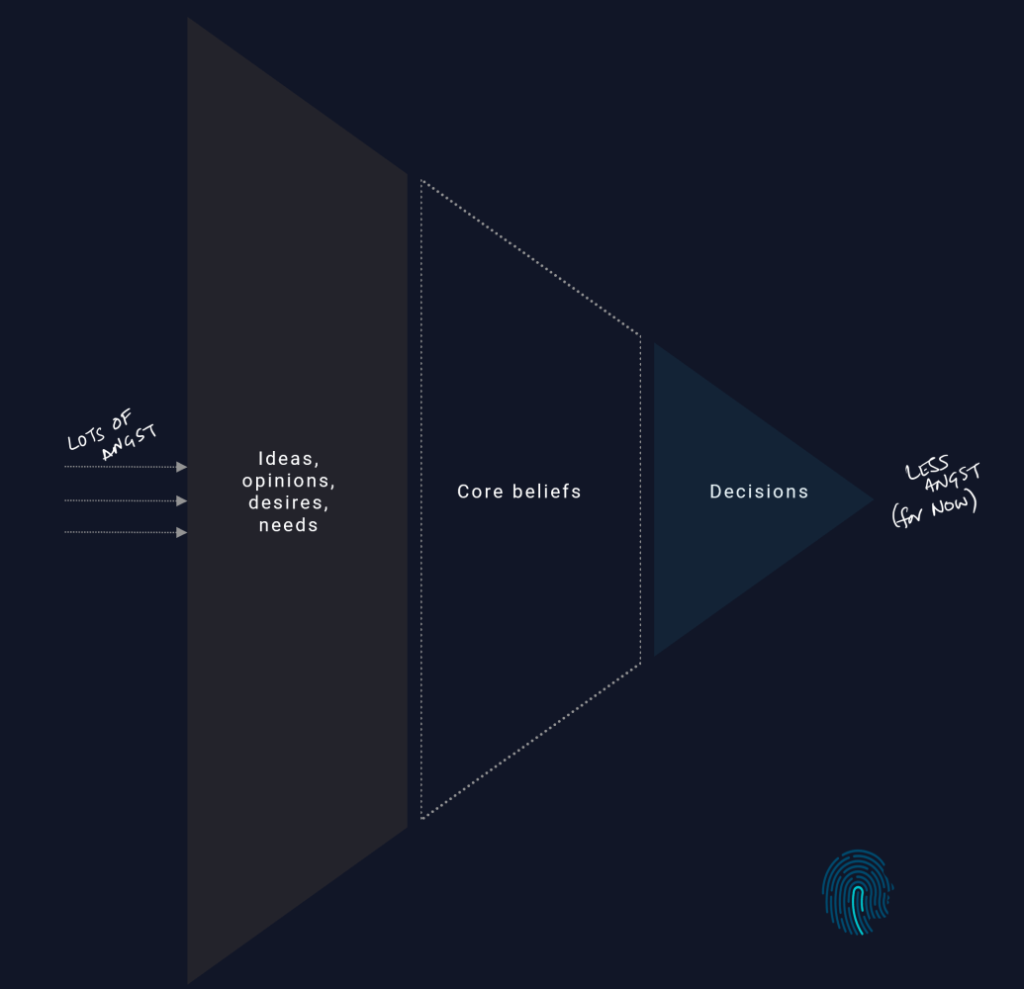
Humans. We’re the only species on this planet that is aware of its finitude.
Which leads to a quirky little side effect – an innate human desire to make our existence more meaningful with every passing day. It’s part of the reason why age is associated with wisdom. It is a shorthand for saying we get more reflective and thoughtful as our hair greys and we realize just how fleeting life can be.
A direct consequence of this realization is that we carry a strong desire to give meaning to almost every type of sense experience in our lives. It’s not just material objects or people that we assign meaning to. We also assign meaning to concepts, ideas, and metaphysical things.
But here’s perhaps the most interesting part. We don’t just go about assigning meaning to the world around us willy-nilly (a very fancy, technical term used by anthropologists).
Instead, we tend to create and utilize a system in our minds. The famous existentialist philosopher Martin Heidegger refers to this as a system of beliefs and meanings that we carry around with us through our daily existence in this world. This ‘system’ of beliefs creates consistency in how we evaluate the world around us, how we make sense of it, and how we give and extract meaning from it.
Why do we need a system of beliefs? And what does it offer to us in corporate research and innovation?
According to Heidegger, we’re all trying to reduce angst in our daily lives through the decisions we make. Angst for him is the natural byproduct of knowing that all of this will ultimately come to an end – think of it like a perpetual sense of anxiety and the decisions we make help provide momentary relief against this anxiety. And to help us make quick decisions day in and day out, we use a “system of beliefs” as a guideline to help us navigate the world around us.
So what does this mean for corporate innovation and marketing?
Well, for starters, we need to create products, solutions, and brands that reduce this feeling of angst for the buyer or user. As you might imagine, reducing angst isn’t simply just about solving problems. It’s about solving the right problems.
Let me give you a classic example. You’re a product rental company – you help consumers rent products rather than buy them. In order to gain subscribers, you go to great lengths to design a brand and a delivery service that tells people to buy less and reduce the amount of waste they produce on an annual basis. The program feels intuitive and logical, yet it does not drive results for your business.

Why?
Because it actually causes more not less angst.
We have to always remember that nothing is ever clear or logical to the consumer.
For example, the consumer actually believes that by uniquely combining mass produced owned products with some unique rental items, they can achieve creativity in their lifestyle without hurting the environment. Yet, the brand has overtly challenged the consumer’s ownerships of products, instead of complimenting them.
Your logical frame for the brand and service has actually pushed the consumer away rather than encouraged them to engage.
As a general rule, we find that a logical frame creates more not less angst. Whether you sell probiotics, food products, or banking products, logical solutions and brands narratives prevent consumers from giving meaning to things the way they desire to.
So how do we solve this problem for the consumer?
The first step is in how you define the problem. Often, the problem definition itself is the problem. For example, a skincare company might think it needs to solve a perceived quality problem with its brand. But until we examine the implicit beliefs that shape how the consumer thinks about quality, we won’t know exactly what problem it is that the brand needs to create solutions against.
The second step is to begin to define target consumers based not on their logical frames – i.e. life stage, demographics, functional pain points – but rather on the underlying core beliefs they hold within a context. The more we start speaking the language of beliefs, the more we’ll be able to solve for the anxieties that these beliefs create in the consumer’s mind.
The third and final step is to begin to make a clear distinction between the behaviors and opinions held by the consumer and underlying core beliefs. The former are manifestations of a core belief, which change and evolve quite rapidly with time. Core beliefs on the other hand change at a glacial pace and give us the opportunity to create consistency in our actions.
Manifestations serve as great inspiration while core beliefs serve as direction.
The concept of existential angst is incredibly rich and it reminds us that our job isn’t just to create and deliver products and solutions. It’s to solve deeply emotional needs that help our consumers navigate their days, months, and years with joy.
